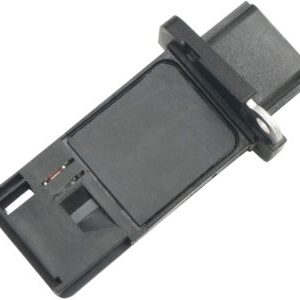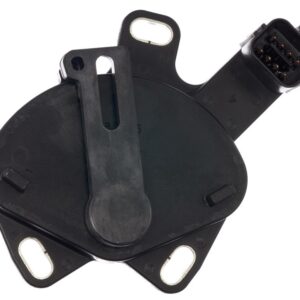Title: Navigating the Roads: Understanding the Transmission Speed Sensor
Introduction:
As you navigate the twists and turns of the road, your vehicle relies on a multitude of components to ensure smooth and efficient operation. Among these essential parts is the transmission speed sensor, a small yet pivotal component that plays a crucial role in your vehicle’s performance. In this blog, we’ll take a closer look at the transmission speed sensor, exploring its function, importance, and how it contributes to the overall driving experience.
What is a Transmission Speed Sensor?
The transmission speed sensor, also known as the vehicle speed sensor (VSS) or output speed sensor, is a vital component of your vehicle’s transmission system. Positioned strategically within the transmission or transaxle, this sensor is responsible for monitoring the rotational speed of various transmission components, such as the input and output shafts.
Functionality:
But how does the transmission speed sensor operate? As your vehicle accelerates or decelerates, the transmission components rotate at different speeds. The transmission speed sensor detects these rotational speeds and generates electrical signals that are sent to the engine control unit (ECU) or transmission control module (TCM). This data is used to calculate vehicle speed, shift points, and other parameters essential for proper transmission operation.
Importance:
The transmission speed sensor is a critical component of your vehicle’s drivetrain, influencing various aspects of performance and drivability. By providing real-time data on vehicle speed and transmission operation, the sensor enables the ECU or TCM to adjust shift points, optimize fuel delivery, and enhance overall driving dynamics. Additionally, the transmission speed sensor plays a crucial role in enabling features such as cruise control, traction control, and anti-lock braking systems (ABS).
Common Symptoms of Transmission Speed Sensor Issues:
Like any component in your vehicle, the transmission speed sensor may experience wear or failure over time. Common symptoms of transmission speed sensor issues include:
1. Inaccurate Speedometer Readings: A malfunctioning speed sensor may cause the speedometer to display inaccurate or erratic readings.
2. Harsh Shifting: Incorrect data from the speed sensor can lead to erratic or harsh shifting, resulting in a jerky or uncomfortable driving experience.
3. Delayed Shifting: A faulty speed sensor may cause delays in shifting or difficulty engaging gears, leading to sluggish acceleration or reduced performance.
4. Check Engine Light: A malfunctioning speed sensor may trigger the check engine light to illuminate on the dashboard, signaling a potential issue with the transmission system.
Maintenance and Repair:
Proper maintenance and timely repair of the transmission speed sensor are essential to ensure smooth and reliable operation of your vehicle’s transmission system. If you experience any symptoms of speed sensor issues, it’s important to have your vehicle inspected by a qualified technician. They can diagnose the problem, replace the sensor if necessary, and perform any additional repairs to restore proper function.
Conclusion:
In conclusion, the transmission speed sensor is a small yet crucial component of your vehicle’s transmission system. By monitoring rotational speeds and providing real-time data on vehicle speed, this sensor enables precise control of transmission operation, enhancing performance, drivability, and overall driving experience. So, the next time you hit the road, take a moment to appreciate the silent hero working behind the scenes—the transmission speed sensor.
Only 3 left in stock (can be backordered)
$18,926.31
Title: Navigating the Roads: Understanding the Transmission Speed Sensor
Introduction:
As you navigate the twists and turns of the road, your vehicle relies on a multitude of components to ensure smooth and efficient operation. Among these essential parts is the transmission speed sensor, a small yet pivotal component that plays a crucial role in your vehicle’s performance. In this blog, we’ll take a closer look at the transmission speed sensor, exploring its function, importance, and how it contributes to the overall driving experience.
What is a Transmission Speed Sensor?
The transmission speed sensor, also known as the vehicle speed sensor (VSS) or output speed sensor, is a vital component of your vehicle’s transmission system. Positioned strategically within the transmission or transaxle, this sensor is responsible for monitoring the rotational speed of various transmission components, such as the input and output shafts.
Functionality:
But how does the transmission speed sensor operate? As your vehicle accelerates or decelerates, the transmission components rotate at different speeds. The transmission speed sensor detects these rotational speeds and generates electrical signals that are sent to the engine control unit (ECU) or transmission control module (TCM). This data is used to calculate vehicle speed, shift points, and other parameters essential for proper transmission operation.
Importance:
The transmission speed sensor is a critical component of your vehicle’s drivetrain, influencing various aspects of performance and drivability. By providing real-time data on vehicle speed and transmission operation, the sensor enables the ECU or TCM to adjust shift points, optimize fuel delivery, and enhance overall driving dynamics. Additionally, the transmission speed sensor plays a crucial role in enabling features such as cruise control, traction control, and anti-lock braking systems (ABS).
Common Symptoms of Transmission Speed Sensor Issues:
Like any component in your vehicle, the transmission speed sensor may experience wear or failure over time. Common symptoms of transmission speed sensor issues include:
1. Inaccurate Speedometer Readings: A malfunctioning speed sensor may cause the speedometer to display inaccurate or erratic readings.
2. Harsh Shifting: Incorrect data from the speed sensor can lead to erratic or harsh shifting, resulting in a jerky or uncomfortable driving experience.
3. Delayed Shifting: A faulty speed sensor may cause delays in shifting or difficulty engaging gears, leading to sluggish acceleration or reduced performance.
4. Check Engine Light: A malfunctioning speed sensor may trigger the check engine light to illuminate on the dashboard, signaling a potential issue with the transmission system.
Maintenance and Repair:
Proper maintenance and timely repair of the transmission speed sensor are essential to ensure smooth and reliable operation of your vehicle’s transmission system. If you experience any symptoms of speed sensor issues, it’s important to have your vehicle inspected by a qualified technician. They can diagnose the problem, replace the sensor if necessary, and perform any additional repairs to restore proper function.
Conclusion:
In conclusion, the transmission speed sensor is a small yet crucial component of your vehicle’s transmission system. By monitoring rotational speeds and providing real-time data on vehicle speed, this sensor enables precise control of transmission operation, enhancing performance, drivability, and overall driving experience. So, the next time you hit the road, take a moment to appreciate the silent hero working behind the scenes—the transmission speed sensor.
| Warehouse | Inventory at warehouse 2 |
|---|


Get E-mail updates about our latest products and special offers.
Sensors and More is Jamaica’s ultimate online auto parts store. Established in 2020, we specialize in genuine electrical parts for Japanese, Read more…
Reviews
There are no reviews yet.